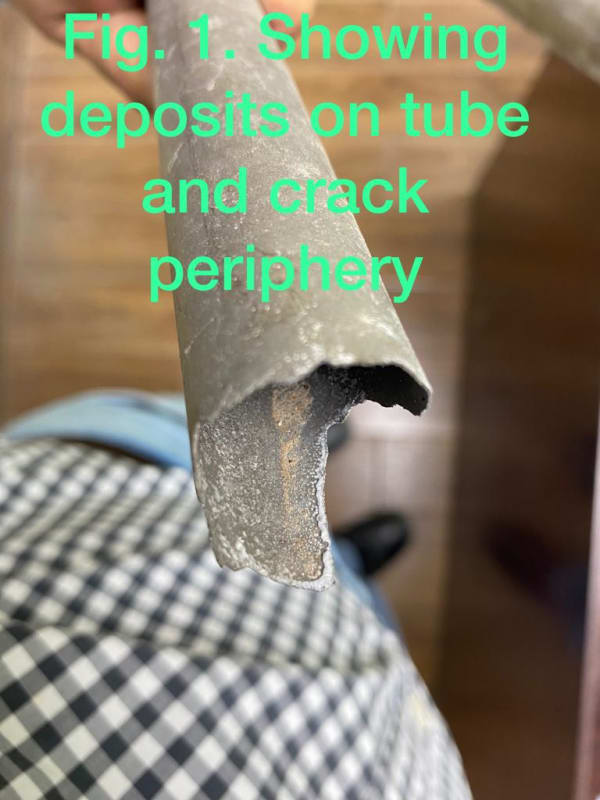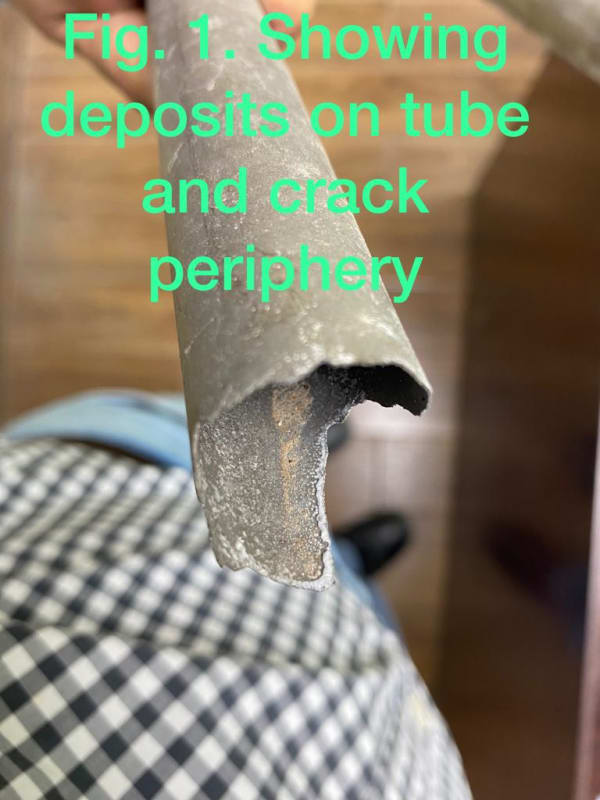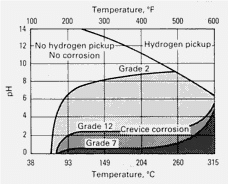Dear All,
We have a vertical heat exchanger that comprises of seven boxes. These boxes are stacked over each other.
The tubes are made of Titanium ASTM B338 Grade 2 and boxes are cast iron. The life of tubes is approximately five years and we would like to choose material that will provide longer life.
Operation:
The function of this heat exchanger is to cool the gases and heat the liquid.
The gases enter from bottom and exit at top i.e. the seventh box. The gases temperature at entry is 100C plus and leave at 60C plus.
Composition of gas:
Ammonia NH3 = 0.402 kg/m3
Carbon Dioxide CO2: 0.255 kg/m3
Water H2O: 0.128 kg/m3
Hydrogen Sulfde H2S: 0.003
The fluid in boxes are different.
One fluid liqour enters the 2nd box and exits from 1st box.
Second fluid enters the 5th box and exists from 3rd box.
In 6th and 7th box cooling water is used.
Fluid composition of 1-5 boxes is similar.
NH3: 2.4-2.8%
NaCl: 6.8-8.1%
NH4Cl: 16.2-18.2%
CO2: 4.2-5.3%
The life of 1-3 boxes is the least, this is probably due to higher temperature of gases in this region. The tubes thin out and mostly at the u-bends. So, erosion has to play a part as well. Tube OD 1inch and thickness 20 SWG = 0.914mm.
We have a vertical heat exchanger that comprises of seven boxes. These boxes are stacked over each other.
The tubes are made of Titanium ASTM B338 Grade 2 and boxes are cast iron. The life of tubes is approximately five years and we would like to choose material that will provide longer life.
Operation:
The function of this heat exchanger is to cool the gases and heat the liquid.
The gases enter from bottom and exit at top i.e. the seventh box. The gases temperature at entry is 100C plus and leave at 60C plus.
Composition of gas:
Ammonia NH3 = 0.402 kg/m3
Carbon Dioxide CO2: 0.255 kg/m3
Water H2O: 0.128 kg/m3
Hydrogen Sulfde H2S: 0.003
The fluid in boxes are different.
One fluid liqour enters the 2nd box and exits from 1st box.
Second fluid enters the 5th box and exists from 3rd box.
In 6th and 7th box cooling water is used.
Fluid composition of 1-5 boxes is similar.
NH3: 2.4-2.8%
NaCl: 6.8-8.1%
NH4Cl: 16.2-18.2%
CO2: 4.2-5.3%
The life of 1-3 boxes is the least, this is probably due to higher temperature of gases in this region. The tubes thin out and mostly at the u-bends. So, erosion has to play a part as well. Tube OD 1inch and thickness 20 SWG = 0.914mm.



